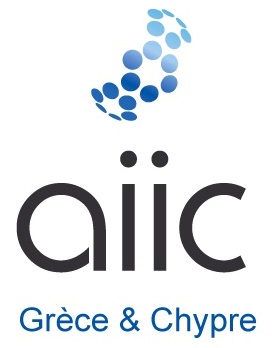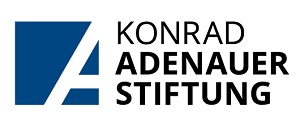Abstracts
Community Interpreting as a Right of Passage: An Overview
Claudia Angelelli, Heriot-Watt University
Narratives of immigration are multiple, diverse and complex. Geographic displacement has many consequences. This talk will focus on the linguistic and communicative consequences of geographic displacement. Specifically it will focus on community interpreting and community interpreters. Migration and geographic displacement have led to interpreters being increasingly required to facilitate encounters among participants from diverse linguistic and cultural backgrounds. When migrants do not speak the societal language and need to communicate, a community interpreter facilitates the interaction. Whether the encounter is between an immigration officer and an asylum seeker, or a service user and a service provider ( as in a medical encounter) or between a judge and a defendant or a parent and a teacher, when users of a non-societal language need to communicate with service providers an interpreter steps in to facilitate the interaction. This presentation will present an overview of community interpreting and of the role of interpreters in this situated practice.
Training Public Service Interpreters:
Challenging, Rewarding, Discouraging but Desperately Needed
Danielle D’Hayer, London Metropolitan University
Community interpreters, also referred to as public service interpreters in the UK, work in challenging environments. One day an interpreter may interpret between a migrant providing evidence of torture in his/her home country and an immigration officer who has to decide whether this person qualifies for asylum or is to be deported. On the next day it could be an assignment between a police officer and a non-native speaker who has been arrested on suspicion of theft. Who are the interpreters? Are they qualified? Can they access training when required? What is the incentive to train? What is the training framework available? Can they afford training? In the UK, training for community interpreters and public service interpreters started in the 1990s. Over the last 25 years, different formats of training for interpreters and service providers have been explored, from the one-day non language-specific course to the full Master’s in Public Service Interpreting (English Law/Health). Is there a right approach? How do you know the course you have designed responds to the interpreting training needs on the ground? How do you reconcile training needs, training provision and professionalisation? These are some of the issues that will be discussed in my presentation.
Teaching Legal Interpreting in a Multilingual Classroom:
Using Technology and Peer Feedback to Optimize Budget Restraints
Mette Rudvin, University of Bologna
Teaching interpreting, be it conference-, community-, court or other forms of
interpreting, demands an intensive use of human resources. Insofar as
interpreting is not only an academic discipline and knowledge domain but a
profession and a skill that is acquired largely through practice and experience,
practicing interpreting in the classroom with trainers is essential (see
Pöchhacker, Kalina and Mikkelson). Other labour-intensive parameters specific to
interpreter training are: exercises need to be conducted in relatively small
student groups; each language combination should have dedicated language
trainers; and each class should have two trainers – one for each language. These
are extremely resource intensive and costly training conditions.
This paper describes a multilingual, intensive training course at the University
of Bologna in Italy, now in its fifth year and therefore still at an
‘experimental’ stage. It is the first legal interpreting training course in
Italy for Languages of Lesser Diffusion (LLD) and one of the very first legal
training courses tout court in the country. Between the first and second
editions of the course, it has had students representing numerous different LLDs
including Vietnamese, Bangla, Romanian, Albanian, Serbian, Italian Sign Language
and the Romanì language as well as the major legal interpreting and PSI lingua
francas such as Arabic, Chinese, Russian, French, English and Spanish.
Due to the very limited resources at the University of Bologna and the fact that
this was a ‘low-cost’ course catering to an extremely underpaid group of
practitioners (LLD interpreters for the police and in court), we were not able
to provide dedicated language teaching for each of the languages represented (although
we were able to examine each candidate in their chosen language for their final
assessment) and provide them with language trainers in the classroom:
Alternative pedagogical methodologies were resorted to, relying on peer feedback,
language specific chatrooms for discussion fora (terminology and theoretical
issues) and internet based teaching and terminology resources. The paper
discusses the uses – advantages and disadvantages – of such multilingual
training formats on the basis of the experience from this course, and suggests
ways in which these methodologies can be improved for future training courses in
other countries. It suggests how multilingual interpreter training can be
conducted at a reasonable cost for the training institution with the use of new
technologies and discusses how best to use limited resources (also through same-language
peer feedback) and the construction of dedicated glossaries.
Interpretation in the Asylum Context in Greece
George Rayess, Interpreter & Journalist
The refugee crisis that the world in general, and Europe in particular, has been going through in the past few years caught all of us with our pants down. The United Nations and its agencies, as well as the European institutions, were not well prepared for the magnitude of such catastrophe, and they had to rush improvising emergency measures trying to ease the pain of millions of helpless people seeking asylum and international protection. Many barriers stood tall in the middle and had to be overthrown, and perhaps the one that proved to be the most challenging and the thorniest was the language barrier. The demand for good interpreters has registered a tremendous increase with the breaking of the crisis, but unfortunately the quality has registered a dramatic drop and countries are doing their best to cope with the situation. This paper will try to offer a unique perspective witnessed by the author since 2015 on the Greek islands of Lesvos and Chios, as well as in Lebanon and at the Syrian border, coordinating a team of cultural mediators deployed for the European Asylum Support Office (EASO) through private agencies and local asylum offices as well. The result is unfortunately unsatisfactory, and, therefore, left in its wake a clear and urgent need for professional interpreters/cultural mediators as the refugee crisis is here to stay. The European University System has long lacked the will and the initiative to train interpreters in the refugee and asylum context and the time has come now.




